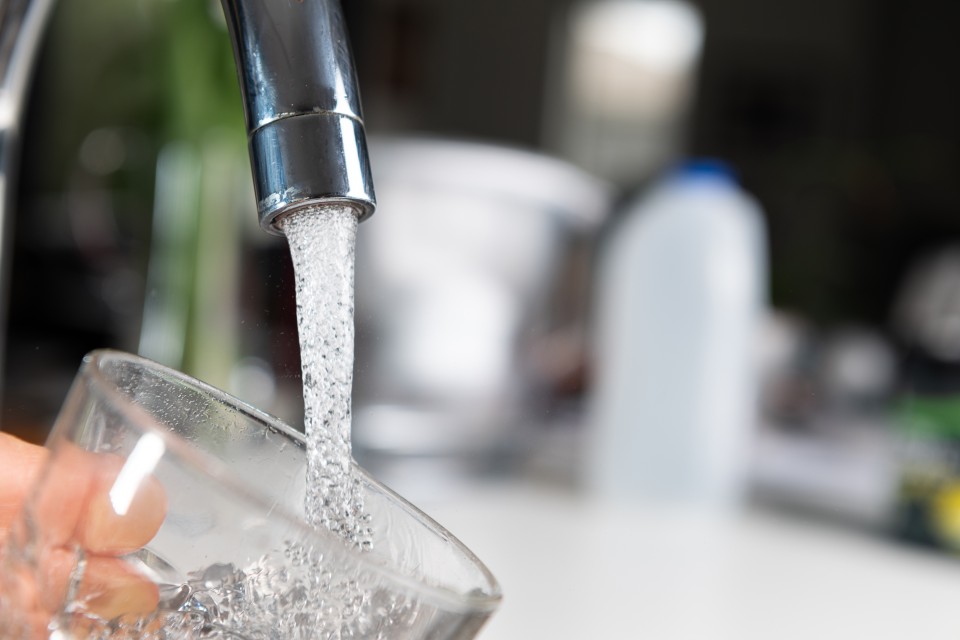0.1 (B)
What's in your water
We're responsible for making sure that the water supplied to Lower Hutt, Porirua, Upper Hutt, Wellington and South Wairarapa is clean and safe to drink.
Water sourced from our rivers and aquifers (natural underground reservoirs) can contain microbiological material and a variety of naturally occurring chemical elements, some of which can cause health problems.
We maintain safe, healthy drinking water by treating the drinking water at a water treatment plant before providing it to our communities. This involves adding a small amount of chlorine to disinfect the water and then fluoride is added for oral health benefits.
We monitor the water supply to make sure that there are no bacteria, viruses or protozoa (such as cryptosporidium and giardia) present following our treatment processes, as they can cause water-borne disease. We also monitor the concentrations of a range of chemicals in our water, to make sure there are no metals or other chemicals at levels that are considered unsafe.
The criteria for determining whether a water supply is safe are contained in Taumata Arowai’s Drinking Water Standards for New Zealand 2022 and their Drinking Water Quality Assurance Rules 2022. The monitoring and testing of the water supply is designed to provide assurance that we meet these standards and rules.
Taumata Arowai’s Drinking Water Standards for New Zealand (DWSNZ) includes recommended maximum safe concentrations of all chemical elements present in New Zealand water supplies that are known to be potentially harmful. Our water treatment processes are designed to provide water with much lower concentrations of these chemical elements than these standards allow.
Chlorine
Is my water supply chlorinated?
All the water that we supply to Wellington, Porirua, Lower Hutt, Upper Hutt and South Wairarapa is chlorinated.
Why is water chlorinated?
Chlorine is a disinfectant that kills water-borne bacteria and viruses that could cause diseases. The water treatment processes that we use are designed to remove these germs as well as protozoa (such as giardia and cryptosporidium) from the water supply, but disinfection of treated water with chlorine provides another level of protection for the public.
In the unlikely event that some germs have not been removed from water during treatment, chlorine will kill them. It also has a residual effect, so will kill bacteria and viruses if they get into the supply system between our water treatment plants and consumers' taps, for instance through a cracked pipe.
Water-borne diseases such as typhoid and cholera were a common cause of death in New Zealand during the 19th and early 20th centuries, but have been controlled, largely due to improved water treatment and chlorination.
How much chlorine is added to water?
For supplies from unsecure water sources, Taumata Arowai’s Drinking Water Quality Assurance Rules require that there be a minimum of 0.2 milligrams of chlorine per litre of water available everywhere within a distribution system, to provide effective disinfection. One milligram per litre is one part per million parts of water.
Chlorine breaks down when it comes into contact with the organic matter that it neutralises, so the level of free available chlorine at any point within a distribution system isn't constant over time. Our dosing levels are based on maintaining a minimum chlorine residual (free available chlorine) of around 0.4 mg/L throughout the distribution network.
The Drinking Water Standards give a maximum allowable value for free available chlorine of 5.0 mg/L. Chlorine is also listed as an "aesthetic determinand", because it can adversely affect the taste and odour of water. The acceptable range for chlorine in consumers' water is 0.3 - 0.6 mg/L. We typically add 0.6 to 0.8 mg/L of chlorine at our treatment plants to achieve the necessary chlorine residual in the distribution system.
Who should I contact about chlorine taste and odour problems?
Taste and odour may occur if chlorine acts on organic material within water distribution pipes. Please ring your city council to log the issue - this allows the issue to be tracked.
Chemical analysis results
Here's where you can view detailed chemical analysis for water from the Te Marua, Waterloo, Wainuiomata, and Gear Island water treatment plants, which supply water to Wellington, Lower and Upper Hutt, and Porirua.
These values are compared with the maximum allowable value (MAV) as contained in the Drinking Water Standards New Zealand (DWSNZ).
We're currently working on adding this information for the South Wairarapa water treatment plants - watch this space.
Te Marua
Wainuiomata
Waterloo
Gear Island
South Wairarapa
Soft or hard water?
The water supplied to Upper Hutt, Lower Hutt, Porirua, Wellington, Greytown and Featherston can generally be described as soft. The water supplied to Martinborough can be described as hard.
Water hardness is determined by the level of calcium carbonate. Under 100mg/L can be characterised as soft, however water hardness operates on a spectrum.
This means that while Martinborough’s water can be described as hard as it is over 100mg/L, it is on the low end of the spectrum - so you might not need to install or use softeners.
Water hardness is described as an "aesthetic determinand" in the Drinking Water Standards, meaning a property that can adversely affect taste, colour or general appearance of water. Guideline values (GV) are applied to aesthetics – these are levels that if exceeded, may make the water unattractive to consumers. Neither calcium or magnesium has an individual GV within the Standards; instead the GV for total hardness is 200mg/L CaCO3.
As at 25 November 2022, the mean value for total hardness in treated water leaving each of our four water treatment plants was:
- Te Mārua: 18mg/L
- Wainuiomata: 34mg/L
- Waterloo/Gear Island: 45mg/L

